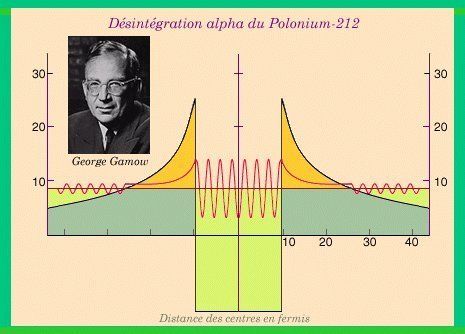-
 Skipjack
Skipjack
-
 Coordinate system
Coordinate system
-
 Acutance
Acutance
-
 DLR
DLR
-
 Silicosis
Silicosis
-
 Goitre
Goitre
-
 Urban heat island
Urban heat island
-
 Keck Observatory
Keck Observatory
-
 Isostasy
Isostasy
-
 Guttation
Guttation
-
 Converting enzyme inhibitor
Converting enzyme inhibitor
-
 H.261
H.261
-
 Second of arc
Second of arc
-
 Hard acid
Hard acid
-
 Expectoration
Expectoration
-
 Function
Function
-
 Missile
Missile
-
 PC-Card
PC-Card
-
 Respiratory chain
Respiratory chain
-
 Cryptic
Cryptic
-
 D meson
D meson
-
 Capstone
Capstone
-
 Aspartate
Aspartate
-
 Epstein-Barr virus
Epstein-Barr virus
-
 Genetic Engineering
Genetic Engineering
-
 Hooke's law
Hooke's law
-
 Transporter protein
Transporter protein
-
 Andesite
Andesite
-
 Exocrine
Exocrine
-
 Revocation
Revocation
Tunnel effect
The tunnel effect is a very frequent phenomenon in quantum mechanics playing a role, for example, in the production of energy in stars and responsible for alpha radioactivity.
George Gamow discovered the effect in quantum mechanics in 1928.
If the potential energy of a particle in a diagram is represented as an electron bound to an atom or an alpha particle in a nucleus, it appears as a hill rising and then falling in height depending on the distance separating the particle from its centre of attraction in the system in question.
In classical physics, if the kinetic energy of a particle is lower than the potential binding energy it cannot escape. But things are not like this in the magical world of quantum mechanics where a particle, even with insufficient kinetic energy, can escape from a system as if there was a tunnel through the obstacle of the potential energy hill. This is a direct consequence of the probabilistic nature of the wave associated with the movement of a quantum particle.
The wave function of the particle does not cancel outside the region where it is classically trapped, and so there is a non-zero probability of finding it outside this region.
In quantum cosmology this has been proposed to describe the birth of the universe by theoreticians such as Vilenkin, Zeldovitch and Linde.
 Tunnel effect
Tunnel effect
Latest
Fill out my online form.



